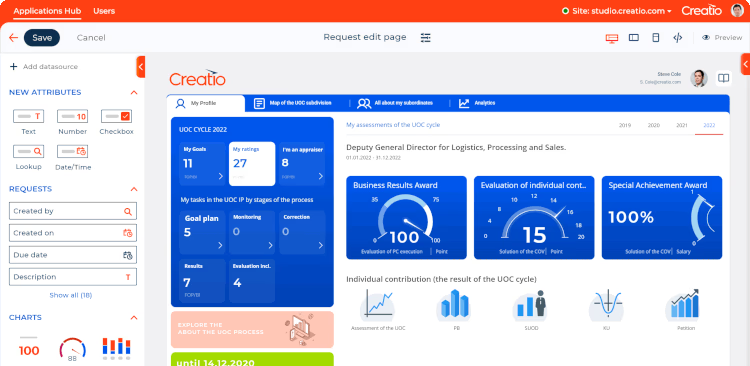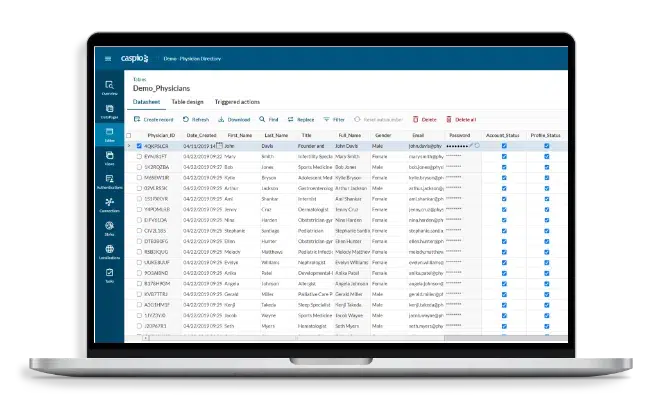A Comprehensive Overview to Applying Scalable Data Sources Without the Need for Coding Experience
In the contemporary landscape of information monitoring, the ability to implement scalable databases without coding know-how is coming to be increasingly crucial for companies of all sizes. What are the vital elements that can truly empower these individuals to take advantage of scalable databases successfully?
Recognizing Scalable Data Sources
In the world of modern-day information management, scalable data sources have actually become an important option for organizations seeking to handle enhancing quantities of information successfully. These data sources are made to suit development by permitting the seamless addition of sources, whether via straight scaling (adding extra equipments) or upright scaling (upgrading existing machines) This flexibility is crucial in today's hectic digital landscape, where data is created at an unprecedented price.
Scalable databases typically use dispersed styles, which enable information to be spread out across several nodes. This circulation not only improves efficiency but additionally provides redundancy, guaranteeing information availability even in the event of hardware failings. Scalability can be an essential element for different applications, including shopping platforms, social networks networks, and huge data analytics, where user need can vary significantly.
Additionally, scalable data sources commonly include robust data consistency models that balance performance and reliability. Organizations should consider their particular demands, such as read and compose speeds, data stability, and fault tolerance when choosing a scalable database remedy. Inevitably, understanding the underlying principles of scalable databases is crucial for businesses aiming to prosper in an increasingly data-driven world.
Trick Attributes to Search For
When evaluating scalable data sources, numerous vital attributes are critical to guaranteeing ideal efficiency and reliability. Consider the style of the database. A distributed style can enhance scalability by permitting information to be kept across several nodes, facilitating smooth information accessibility and handling as demand rises.
An additional critical feature is data dividing, which makes it possible for efficient monitoring of big datasets by splitting them into smaller sized, a lot more manageable pieces (no-code). This technique not only improves performance yet additionally simplifies source appropriation
In addition, seek robust replication capabilities. This feature ensures information redundancy and high availability, minimizing downtime during upkeep or unexpected failings.
Performance tracking devices are likewise essential, as they supply real-time insights into system wellness and operational efficiency, enabling prompt modifications to keep optimum performance.

User-Friendly Data Source Devices
Simpleness is a crucial element in the design of straightforward data source devices, as it improves access for individuals with varying levels of technological proficiency. no-code. These devices focus on instinctive interfaces, allowing users to create, manage, and question data sources without needing substantial programming knowledge
Key functions normally consist of drag-and-drop capability, aesthetic information modeling, and pre-built templates that simplify the setup process. Such devices commonly use directed tutorials or onboarding processes that assist in user engagement and lower the learning curve. In addition, smooth combination with preferred information sources and solutions makes certain that individuals can conveniently import and export information, further streamlining operations.

Moreover, robust assistance and neighborhood sources, such as online forums and documentation, boost the individual experience by providing aid when required. In general, user-friendly data source tools encourage organizations to harness the power of scalable databases, making data management accessible to every person entailed.
Step-by-Step Implementation Overview
Just how can companies effectively carry out scalable databases to satisfy their growing data needs? The procedure starts with determining specific data needs, consisting of the volume, selection, and speed of data that will certainly be processed. Next off, companies need to evaluate easy to use database tools that use scalability attributes, such as cloud-based remedies or managed database services.
Once the best tool is selected, the following step entails setting up the database environment. This consists of establishing up circumstances, defining user authorizations, and establishing information structures that line up with company objectives. Organizations must then move existing data into the brand-new system, making sure data stability and minimal disruption to operations.
Post-migration, conducting comprehensive testing is critical; this includes efficiency screening under numerous tons problems to ensure the system can manage future development - no-code. Furthermore, it is essential to train personnel on the data source monitoring interface to assist in smooth use
Finest Practices for Administration
Effective administration of scalable data sources requires a tactical technique that prioritizes recurring tracking and optimization. To accomplish this, organizations must apply durable surveillance devices that supply real-time understandings right into database efficiency metrics, such as see post query action times, resource use, and transaction throughput. Regularly assessing these metrics can assist recognize bottlenecks and locations for enhancement.

Routine back-ups and calamity recovery plans are important to protect information honesty and availability. Developing a regular for examining these backups will make sure a trusted recuperation process in case of an unforeseen failure.
In addition, efficiency tuning must be a continual procedure. Readjusting indexing techniques, maximizing inquiries, and scaling resourcesâEUR" whether up and down or horizontallyâEUR" will aid maintain optimum performance as use needs develop.
Last but not least, promoting a society of knowledge sharing amongst employee will allow continual knowing and adjustment, making certain that the management of scalable data sources continues to be efficient and reliable gradually.
Conclusion
To conclude, the execution of scalable databases can be successfully attained without coding expertise with the utilization of easy to use devices and intuitive user interfaces. By adhering to the laid out techniques for setup, information migration, and performance screening, people can navigate the intricacies of database administration with ease. Stressing best methods for recurring maintenance and cooperation additional enhances the capability to manage scalable data sources efficiently in a quickly read this evolving data-driven setting.
In the contemporary landscape of data monitoring, the ability to carry out scalable data sources without coding know-how is ending up being increasingly vital for companies of all dimensions.In the world of modern data administration, scalable data sources have emerged as a crucial service for companies looking for to manage raising quantities of details successfully.In addition, scalable databases typically include durable information uniformity versions that stabilize efficiency and dependability.Exactly how can organizations efficiently implement scalable data sources to fulfill their expanding information demands? Next off, visit their website organizations should evaluate user-friendly data source tools that offer scalability attributes, such as cloud-based options or managed data source services.